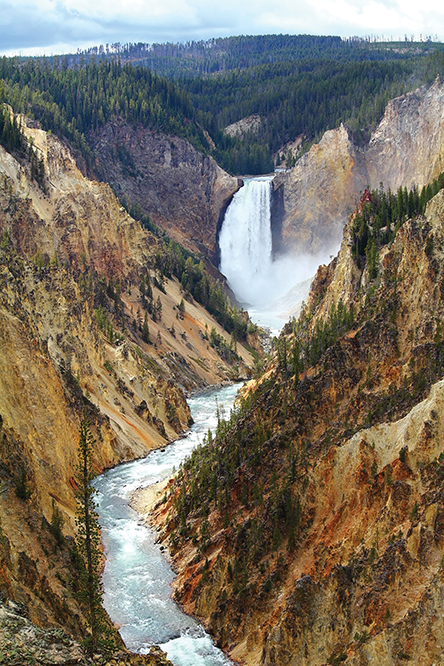Waterfall is any sudden descent of a stream from a higher to a lower level. Waterfalls can form in many ways. For example, some waterfalls form when a stream flows over hard layers of rock that erode (wear away) more slowly than rock downstream. Other waterfalls develop when landslides or lava flows dam rivers. Waterfalls can also form when sea level drops, as rivers begin to cut down into the rock that underlies their channels.

If the volume of water is small, the waterfall may be called a cascade. A waterfall with a large volume is a cataract. Famous cataracts include Niagara Falls on the United States-Canada border; Victoria Falls on the Zambezi River in Africa; and Churchill Falls in Labrador.

Often, the term cataract is also applied to a series of rapids or falls caused by the flow of the stream over a steep, rocky bed. Examples of this type of cataract are on the Nile and the Orinoco rivers. Cataracts of this type with more gradual falls are called rapids.
Some waterfalls are of great height. These include the Upper Yosemite Falls in California at 1,430 feet (436 meters) and Sutherland Falls in New Zealand at 1,904 feet (580 meters). Other noted waterfalls include Montmorency Falls in Quebec; Multnomah Falls, near the Columbia River in Oregon; and the Upper and Lower Falls in Yellowstone National Park.
Waterfalls usually occur in mountainous regions. But sometimes they form where streams descend from an upland to a lowland, as at the edge of a plateau. The line along which several rivers flowing into the same body of water descend is called the fall line. The Fall Line of the eastern United States occurs where rivers flowing from the harder rocks of the Piedmont Region descend to the softer rocks near the Atlantic Coast. Waterfalls and rapids along the Fall Line provided a major source of waterpower in the 1800’s. The Fall Line also established the upstream limit to which ships could travel. For this reason, the Fall Line determined the locations of many Eastern cities (see Fall line ). Great Falls on the Potomac River near Washington, D.C., is one famous Fall Line waterfall. It was bypassed with a canal first built under the direction of George Washington and finished in 1802, after Washington’s death.
